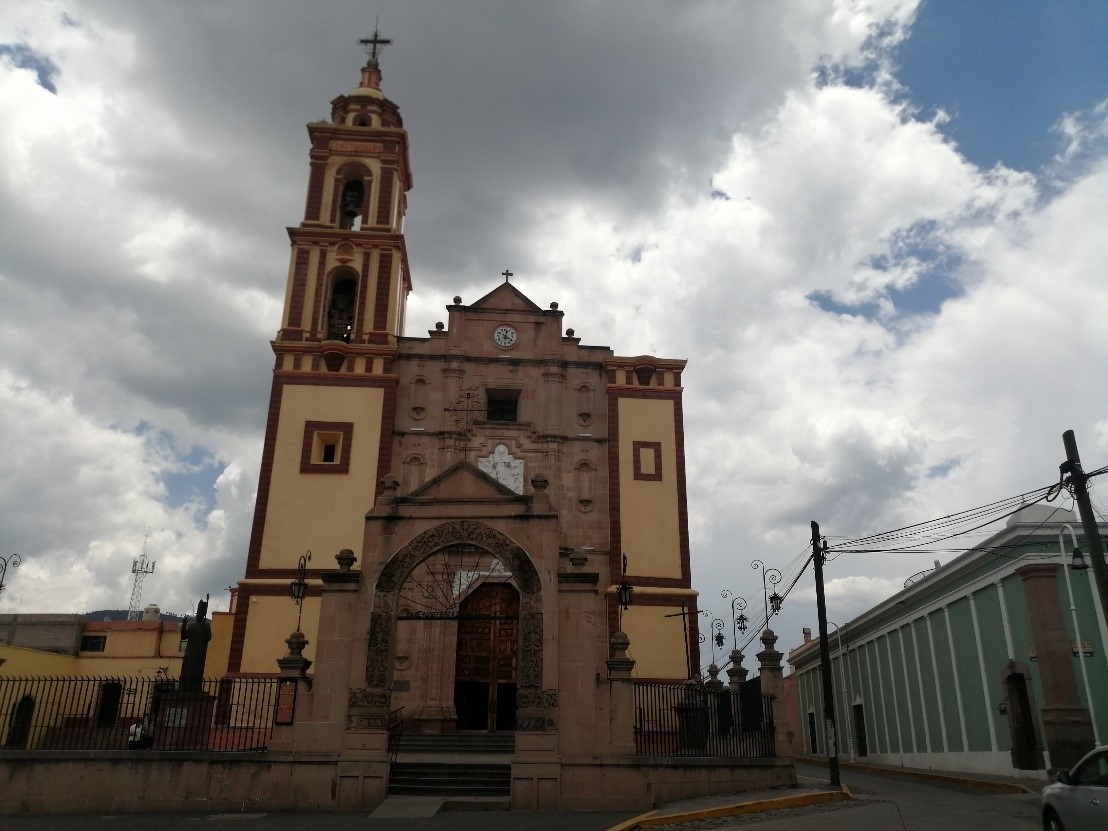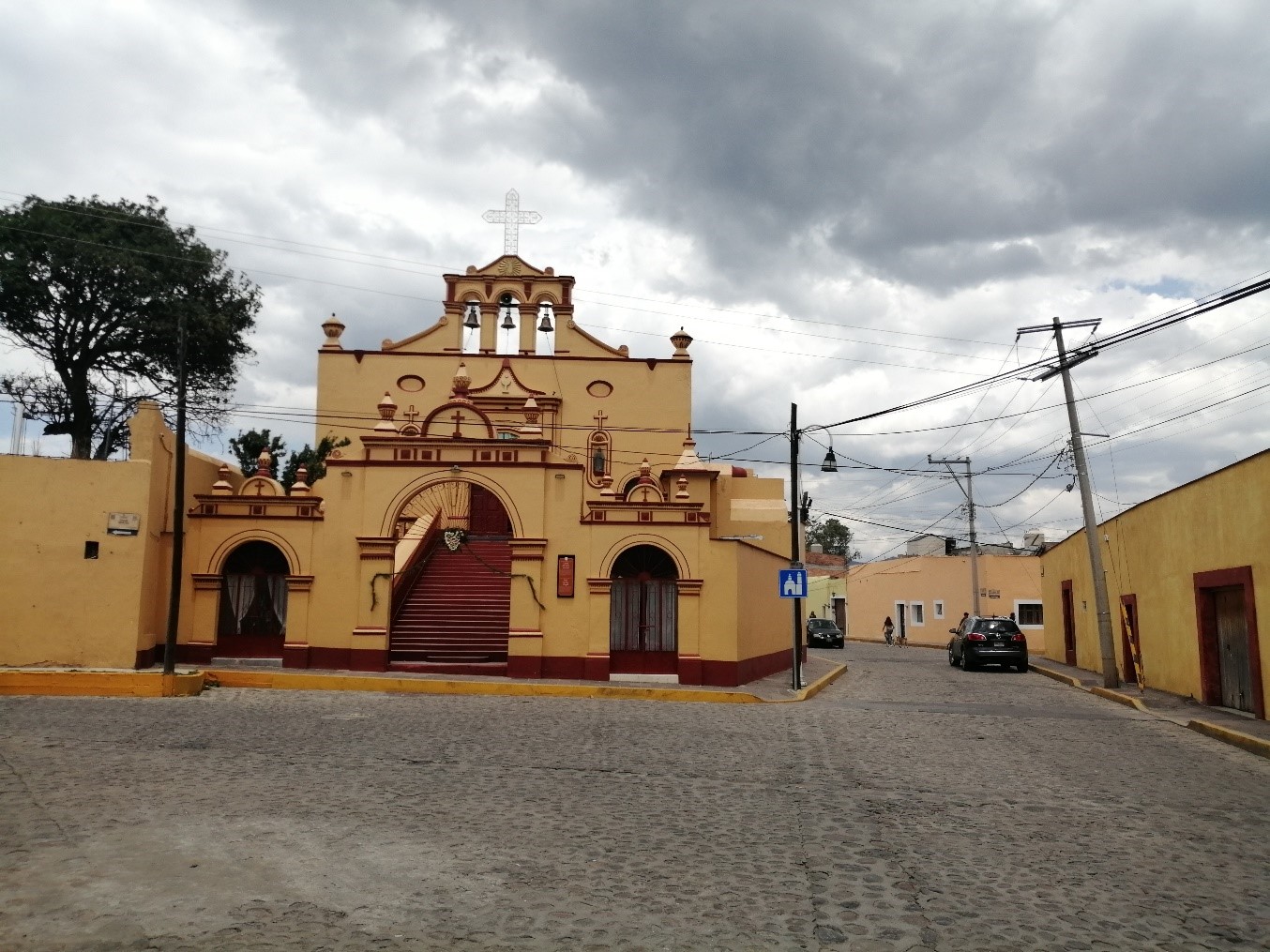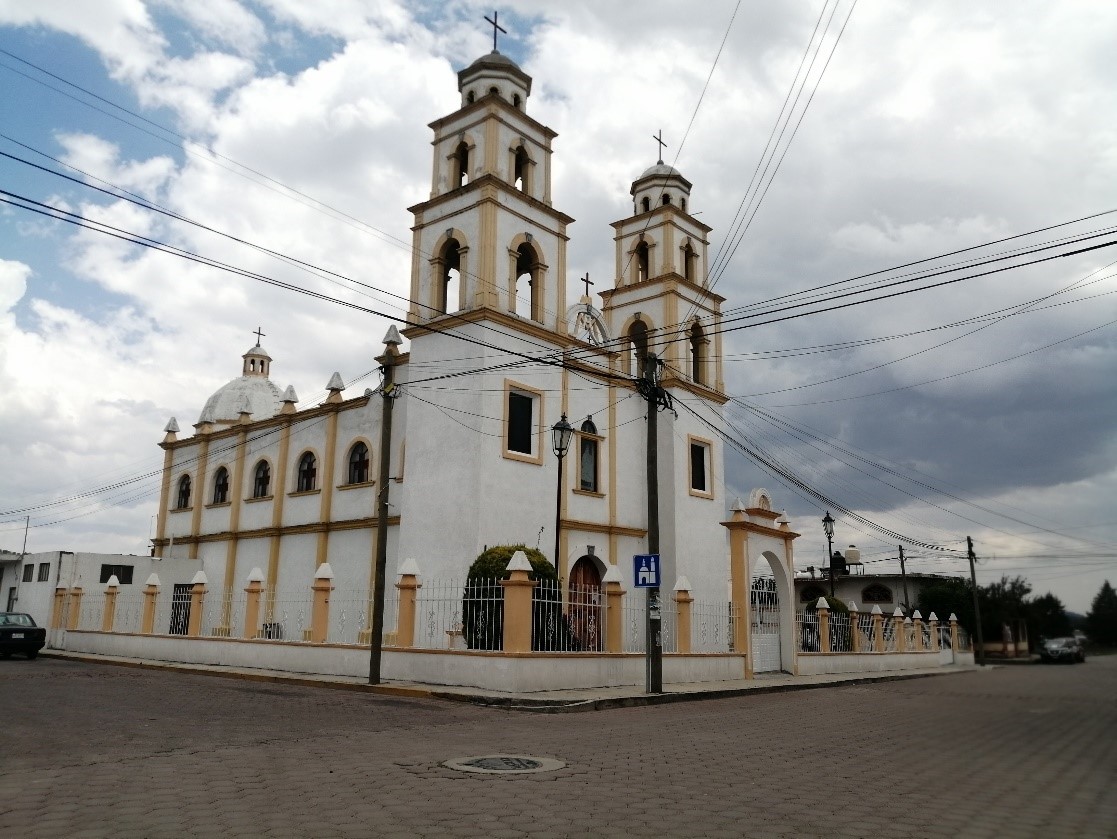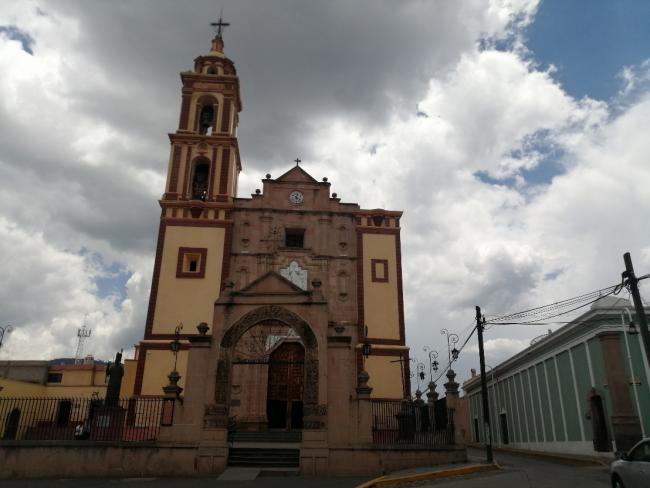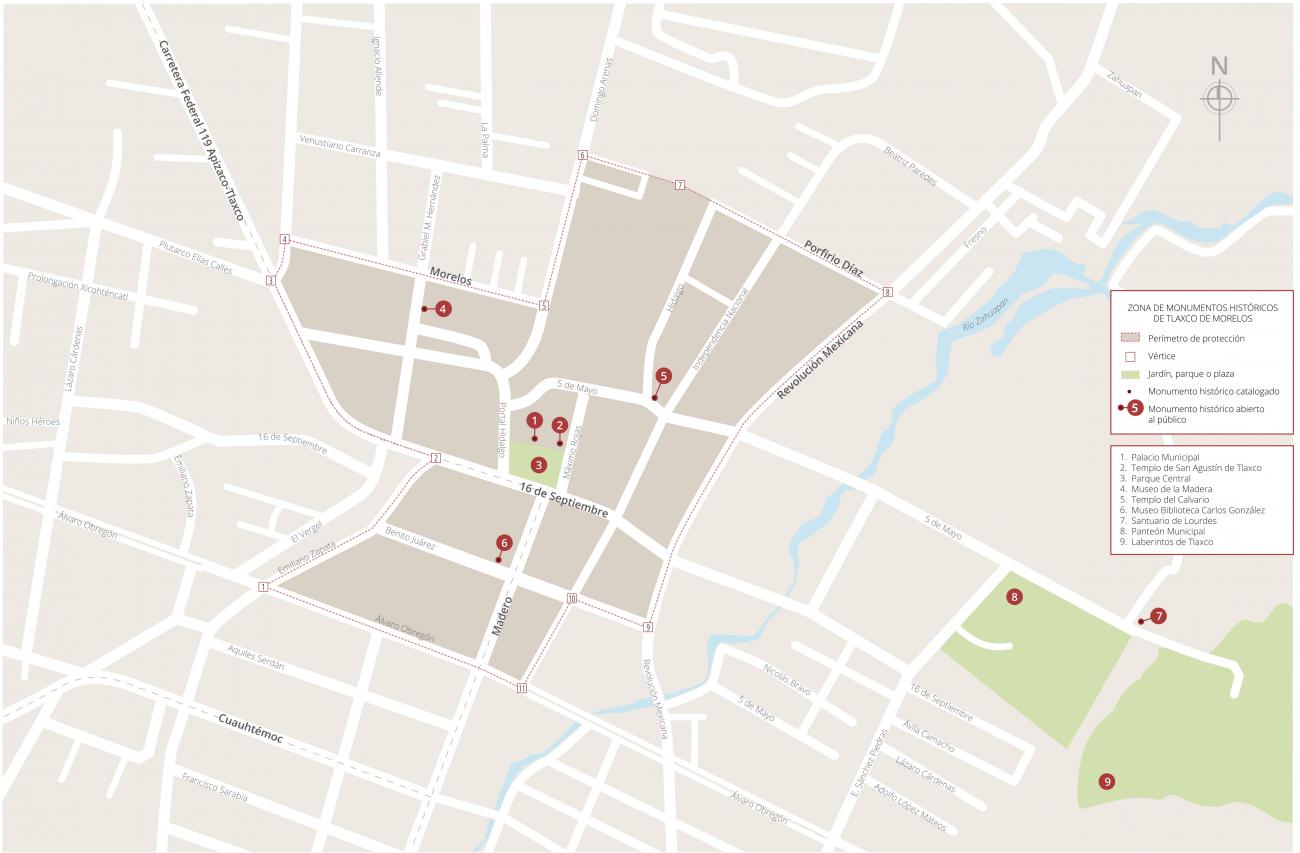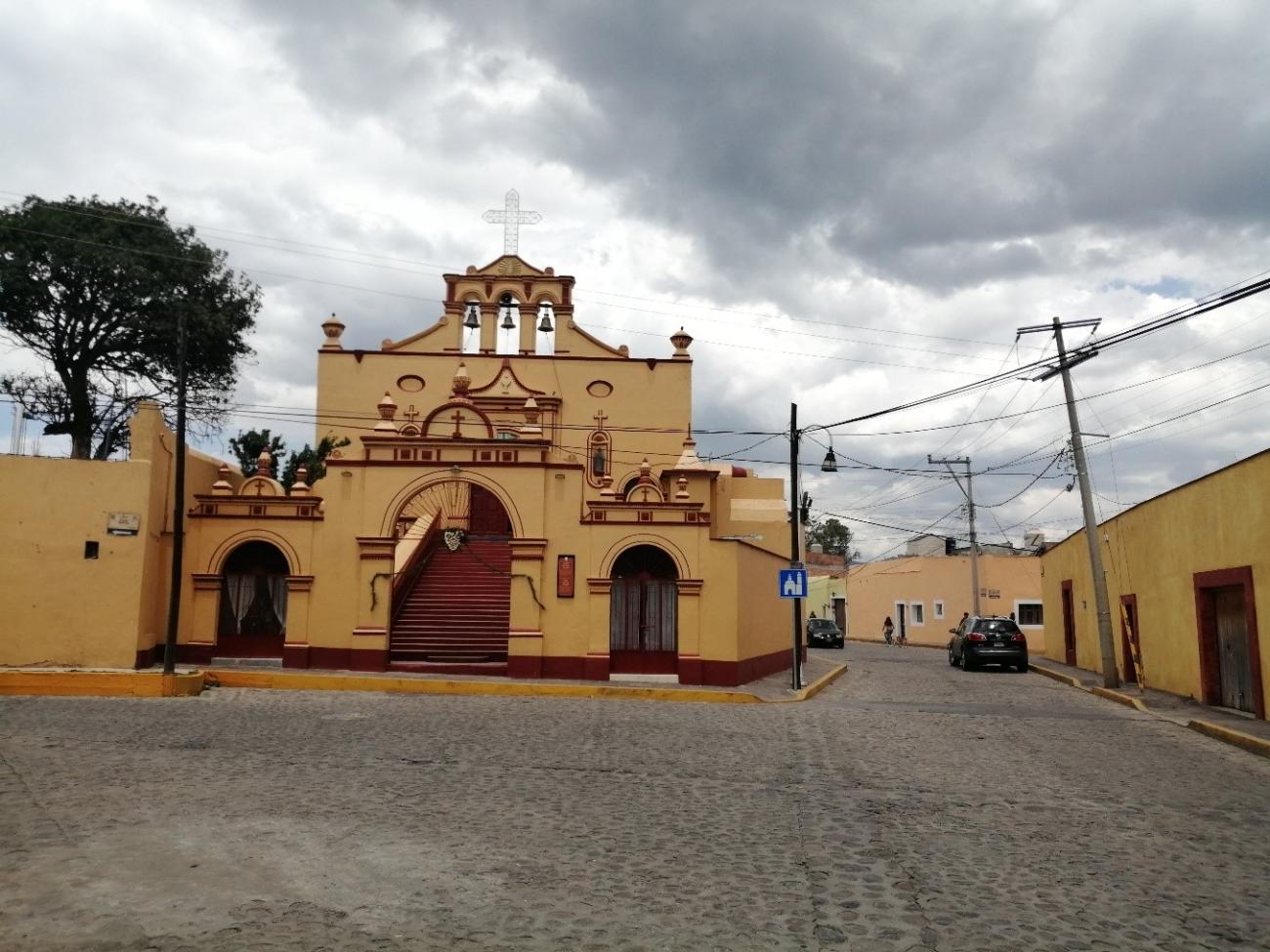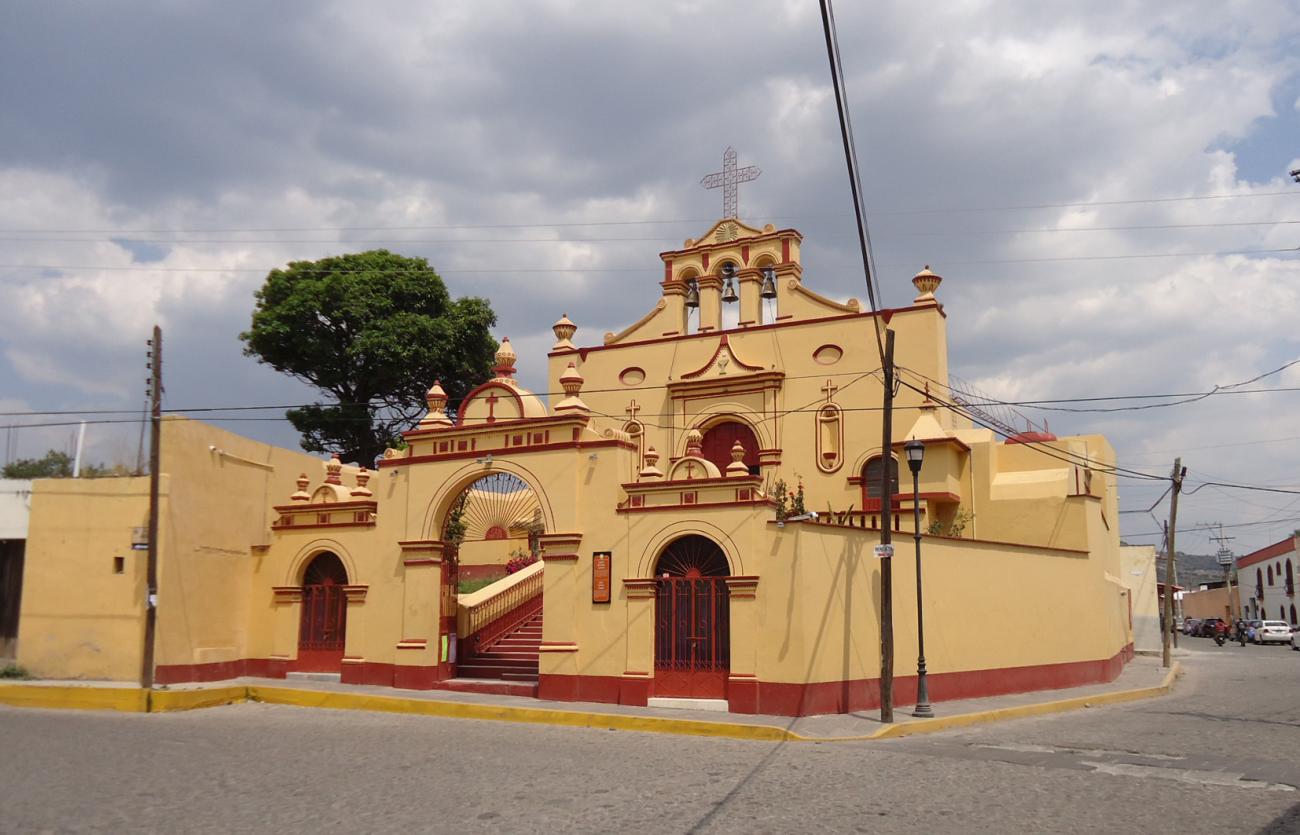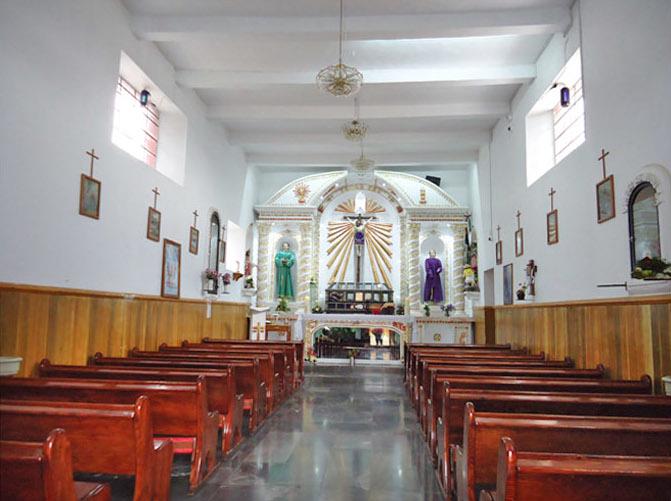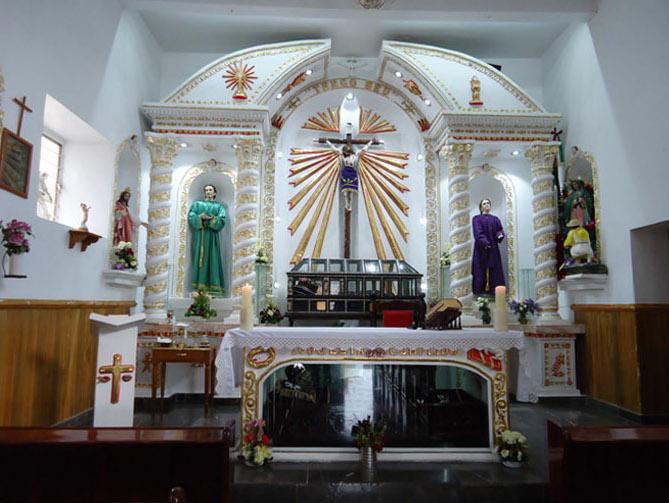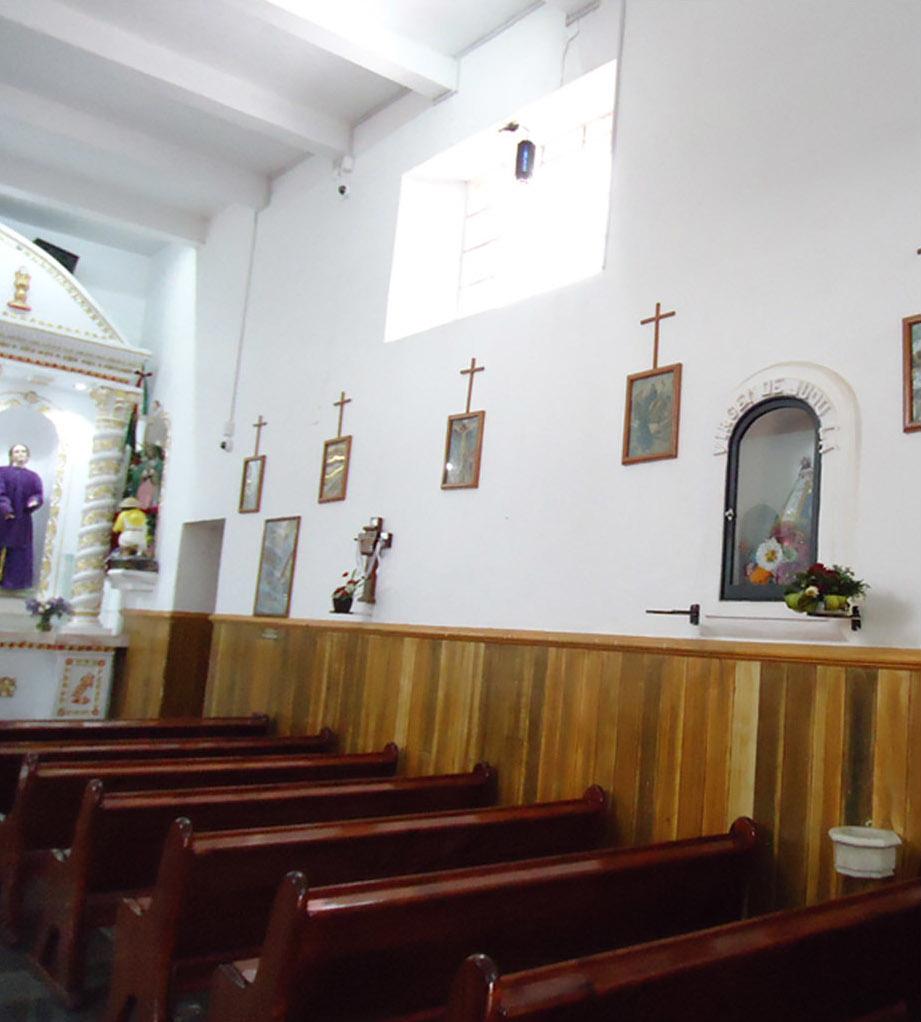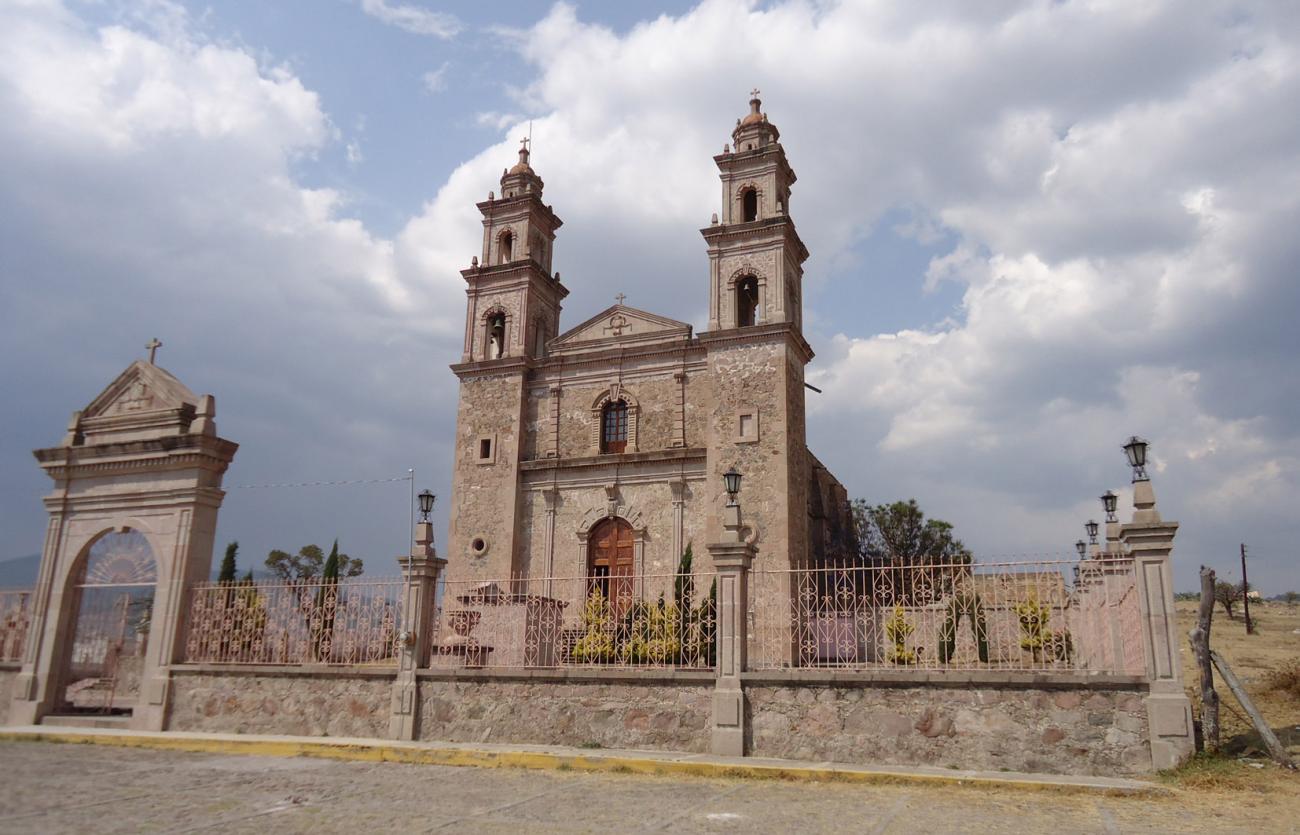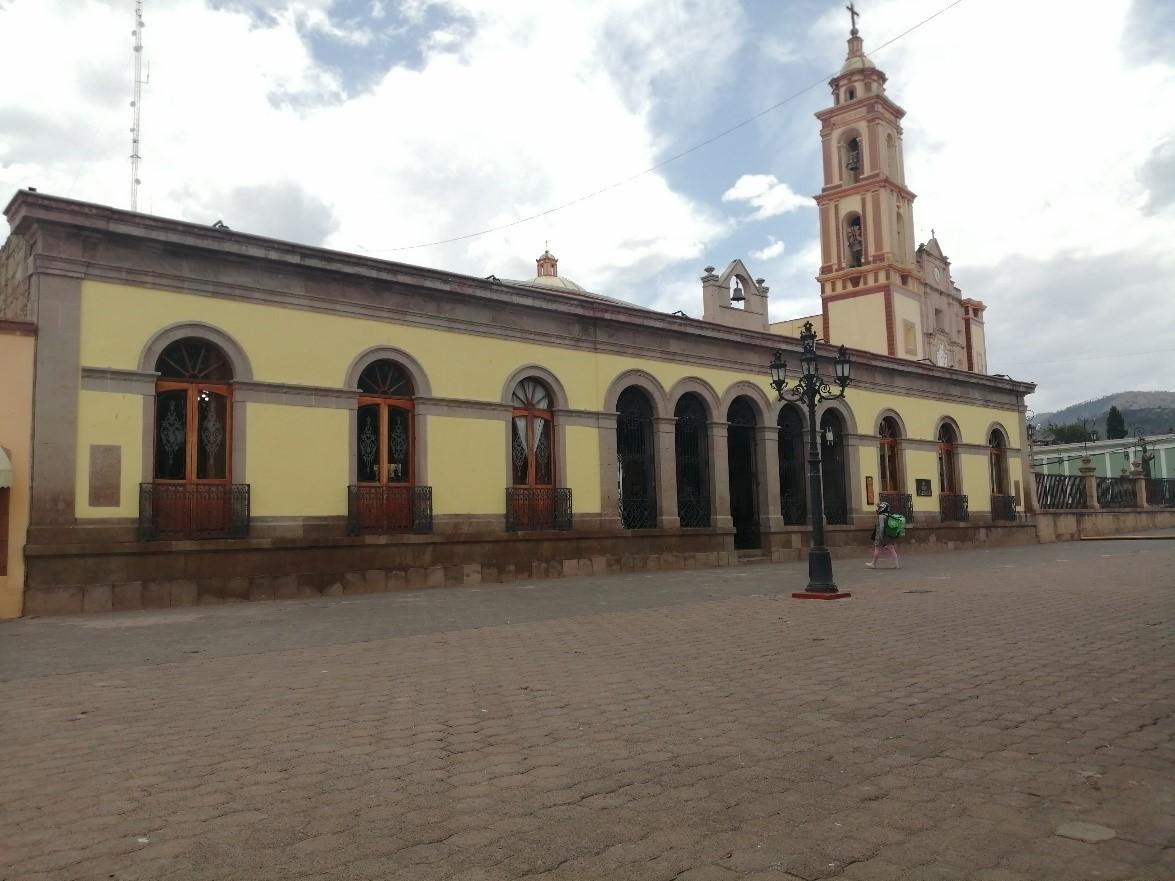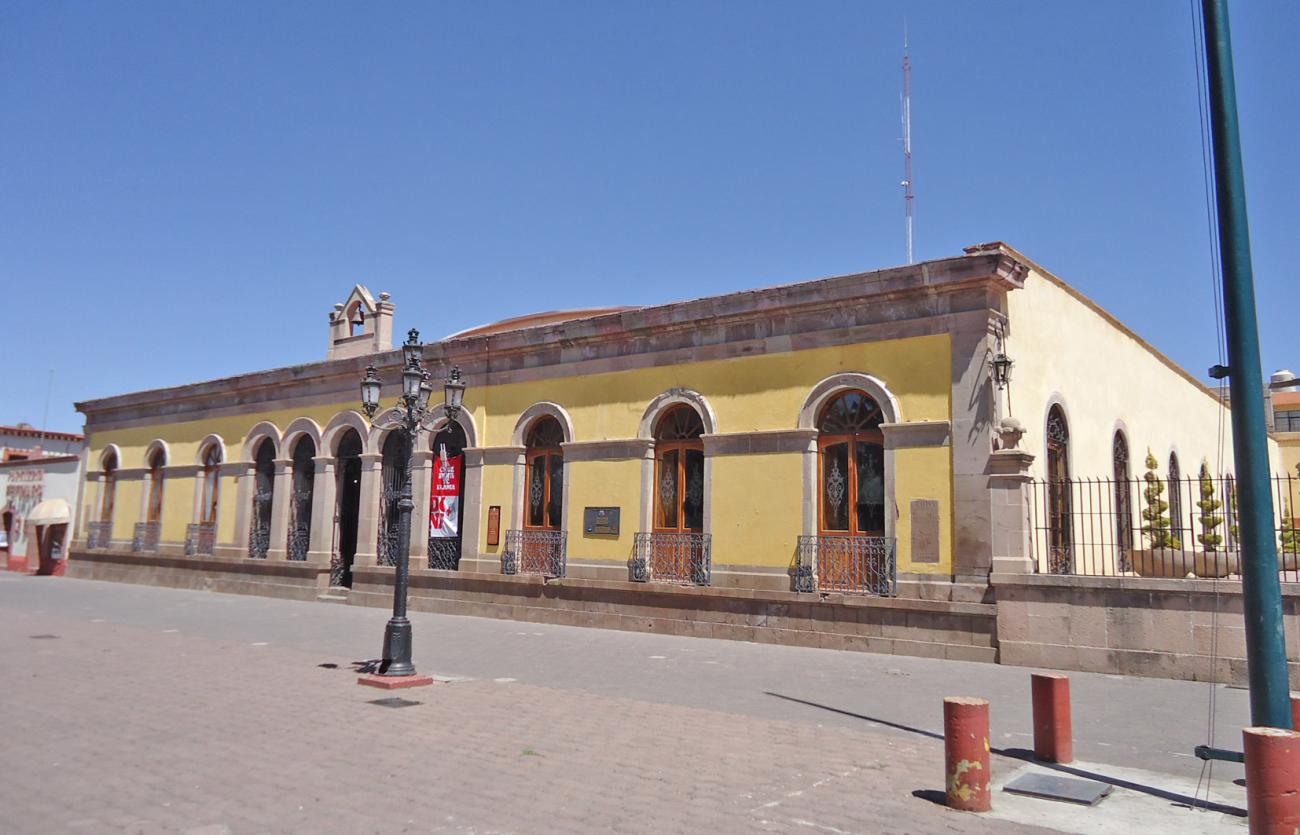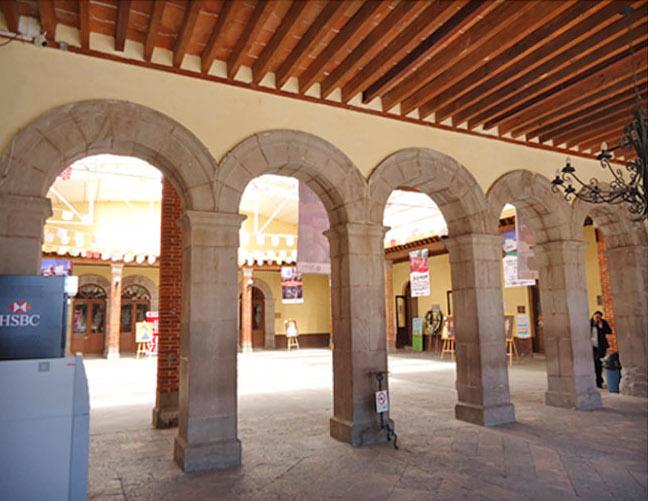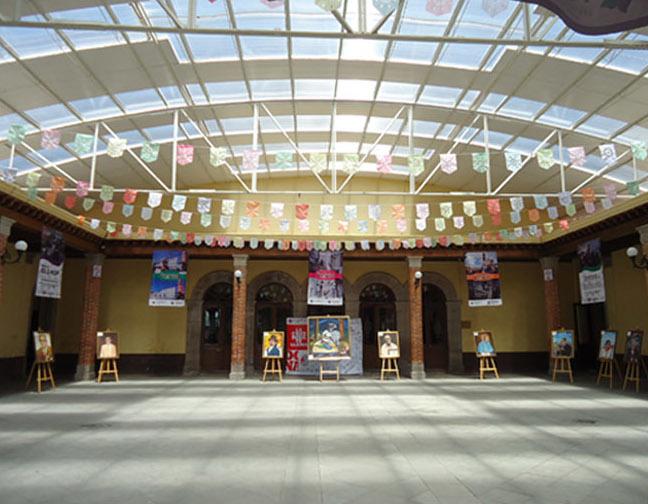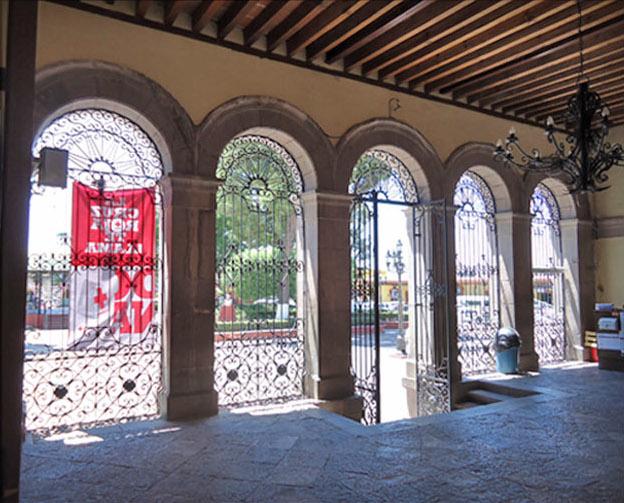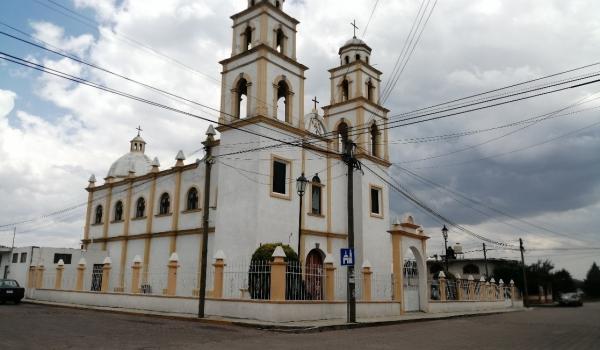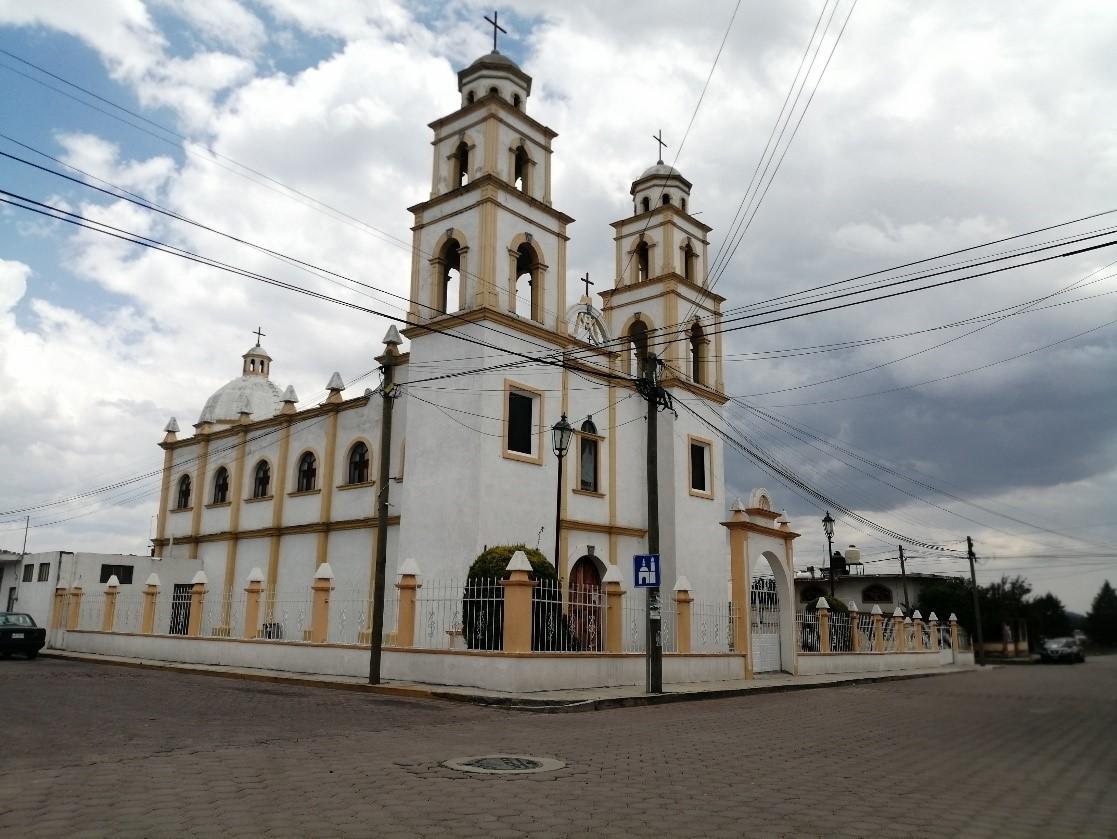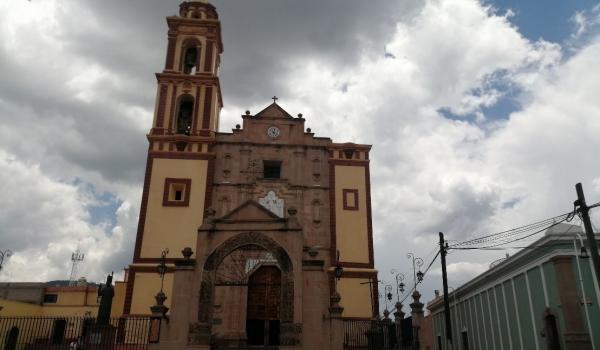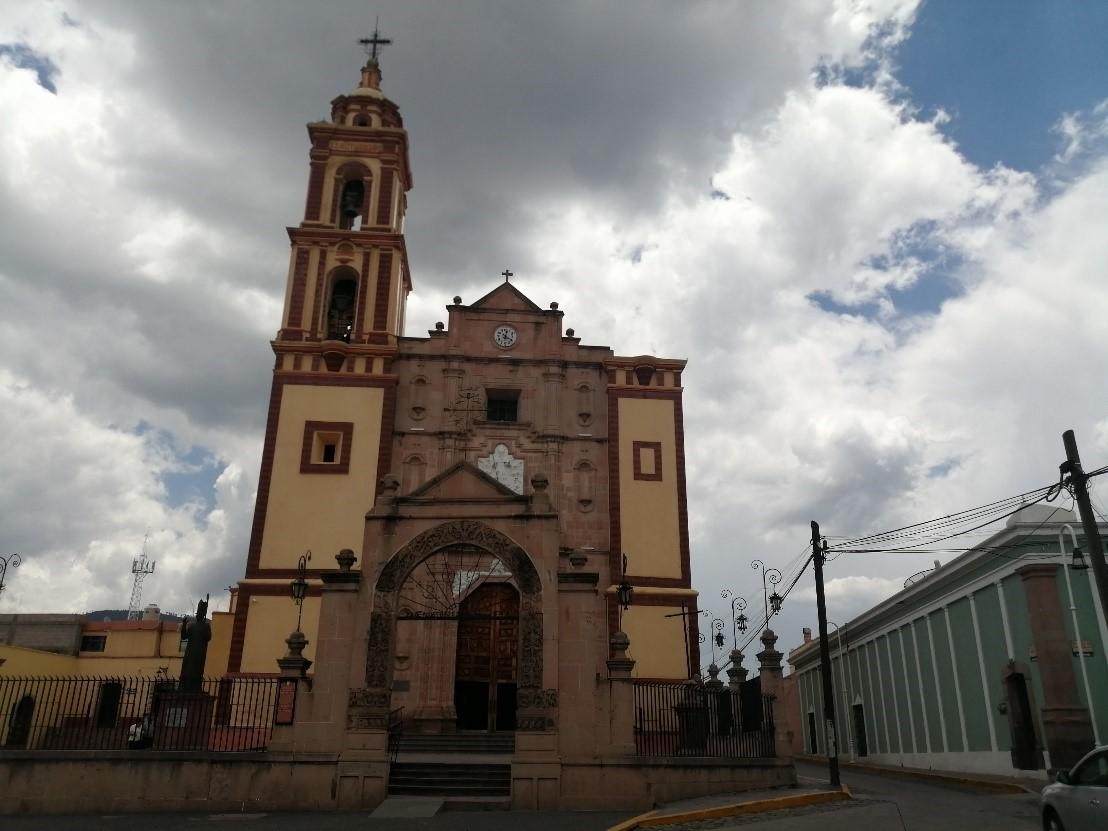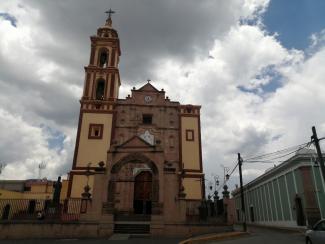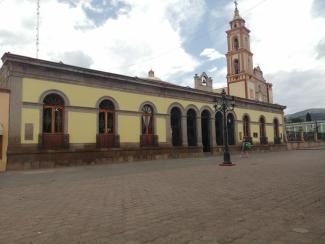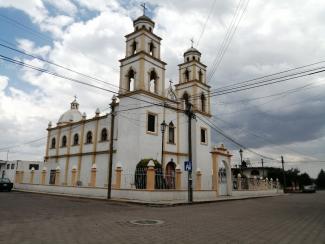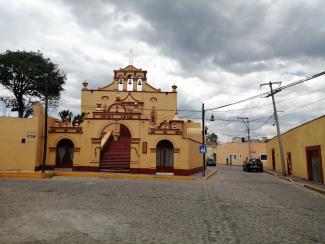Tlaxco de Morelos
Historical Monuments Zone
Abstract
Surrounded by haciendas, forests, streams and waterfalls, the city is distinguished by its beautiful pink cantera stone churches, by the history of its Municipal Palace and as the birthplace of the first woman to be elected to government in Mexico.
The city of Tlaxco is located in the central highlands of Mexico, north of the state of Tlaxcala. It is surrounded by forests, streams and small waterfalls.
The name Tlaxco comes from the Nahuatl word “tlachco” which means “at the place of the ball game.” During pre-Hispanic times, various human groups settled in the area. First came those from the Gulf or from Cantona, followed by settlers of the Teotihuacan culture, who coexisted with Mixtecs, Olmec-Xicalancas, Tajinoids and Otomis. Later, a group of Huasteca Otomis settled here permanently and gave rise to the so-called Tlaxco culture, which is identified with the lordship of Tliliuhtepec. This group helped the Tlaxcaltecas to protect their borders and, during the conquest of Tenochtitlan, they allied with them and with the Spanish.
During the colonial era, the current territory of Tlaxco was a favored site for the establishment of haciendas. The first such settlement was a ranch for raising small livestock, granted by royal order to Pierres Gómez in 1549. This ranch is the forerunner of the Mazaquiahuac hacienda, which can still be visited today.
In 1585, due to the size of the population, Tlaxco received religious services from friars from the Attamgatepec monastery. Later, in 1614 the friars began to build their church, which was not finished until 1858.
One of the products that began to gain in importance in the 17th century is barley, cultivation of which was practically monopolized by the farms of Tlaxco, Huamantla and Ixtacuixtla.
Meanwhile, beginning in 1757, haciendas for the production of pulque began to be established, which today constitute one of the main attractions of the city.
In the 18th century the Parish Church of San Agustín de Hipona was built, which was designed by the same architect who built the Cathedral of Morelia. Its pink cantera stone finishes and its carved wood and gold laminated altarpieces make it one of the city’s treasures.
Tlaxco has been the scene of a number of historical events. During the war of independence, in 1812, the insurgent forces entered the town to evict the Spanish Brigadier Manuel de la Concha, who had committed great crimes against them. During that period, the state of Tlaxcala underwent a new territorial division. It was made up of five districts: Hidalgo, Zaragoza, Juárez, Morelos and Ocampo. Tlaxco was integrated into the Morelos district. During the French Intervention and the Empire of Maximilian, militias were formed in Tlaxco to fight against the invaders under the orders of General Rodríguez Bocardo.
Later, in 1877, the people gave their support to Porfirio Díaz and the Regenerative Army of the Mexican Republic during the battle of Tecoac, where he defeated the troops of President Sebastián Lerdo de Tejada, who was seeking reelection. In recognition, the governor of Tlaxcala granted Tlaxco the title of “Villa de la Regeneración” and, in gratitude, Porfirio Díaz attended the inauguration of the town hall on January 28, 1894, an event that represented the consolidation of the town as a municipality.
By 1899, a board of landowners and merchants was organized in Tlaxco that decided to establish a railroad between the town and Apizaco. On June 2, 1902, the agricultural railway was inaugurated, which consisted of a rudimentary wagon towed by six mules. In February 1905, a locomotive was added, but not many years passed before it stopped working because it proved too costly.
During the Mexican Revolution there were several uprisings in the region that involved the peons from the Tlaxco haciendas. As a consequence of the Revolution, between 1935 and 1940, the region underwent agrarian division, meaning that the lands of the haciendas were converted into ejidos (collectively owned lands) and new communities were founded.
In 1939 the Villa de Regeneración received the title of city, changed its name to Tlaxco de Morelos and began a process of modernization, driven by the construction of the Apizaco-Tlaxco-Chignahuapan highway in 1956.
Tlaxco was also the birthplace of important historical figures, such as Gabriel M. Hernández (1878-1913), who at the beginning of the Revolution joined Francisco I. Madero and led a rebellion in Tlaxcala. It was also home to María de los Ángeles Grant, the first woman to hold the position of councilor on the Tlaxco council, a deputy in the local congress of Tlaxcala, a federal deputy in the Congress of the Union and the first woman to be part of the Great Commission of Mexico’s federal legislature.
Today the city is characterized by its crafts made of carved wood and silver, by the production of delicious cheeses, and by its beautiful cobbled streets.
The plan of the city comprises irregular streets, which meander between the ravines that define the topography. The urban profile of the area is characterized by its variety of buildings, which have been adapted to the way of life of the inhabitants while reflecting the physical conditions of the terrain and the use of local materials.
In the center of the city is the garden of the main plaza, adorned with a sculpture dedicated to Victoria Dornelas, who was the model for the painting “La Patria” by the muralist Jorge González Camarena, a painting that for a long time appeared on the covers of school textbooks distributed free of charge.
The city of Tlaxco de Morelos was declared a Zone of Historical Monuments on April 9, 1986. The Zone covers an area of 0.57 km2 and comprises 18 blocks with buildings of historical and architectural value built between the 16th and 19th centuries. Among the buildings dedicated to religious worship, of particular note are the Parish Church of San Agustín, which dates from the 17th century and is characterized by its pink cantera stone façade and its Baroque altarpieces; the Chapel of Calvario, built at the end of the 19th century; and the Chapel of Lourdes, built with pink cantera stone in a Neoclassical style. Among the civil buildings, the Municipal Palace stands out with its beautiful arcades, ironwork and windows decorated with floral motifs.
In 2015 the Secretary of Tourism declared Tlaxco de Morelos a Pueblo Mágico (Magical Town).
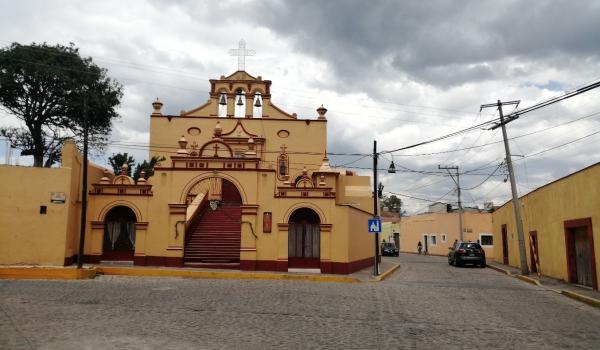
Capilla del Santo Calvario
Chapel built during the 19th and 20th centuries. Access is via a large staircase. The main façade is cream-colored, and the walls are made of stone and are 80 cm thick.
Capilla del Santo Calvario
Chapel built during the 19th and 20th centuries. Access is via a large staircase. The main façade is cream-colored, and the walls are made of stone and are 80 cm thick.
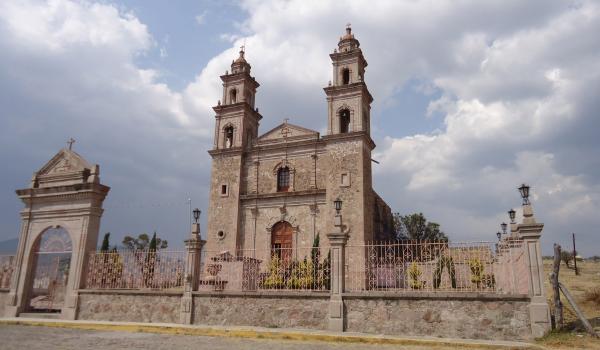
Templo de Nuestra Señora de Lourdes
Religious building completed in 1898.
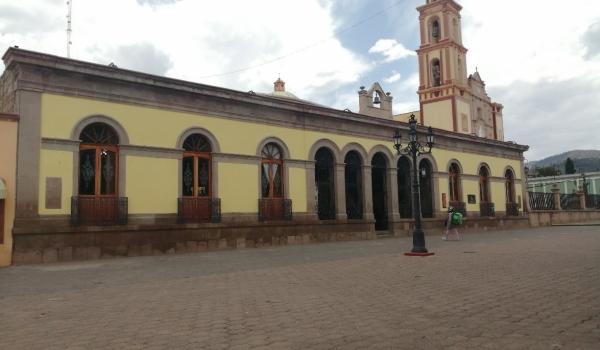
Presidencia Municipal de Tlaxco
19th-century civil building. The side plaques indicate that the slabs for the paving were donated by Pedro Munive on April 27, 1887, and the stone was donated by Pascual García on May 18 of the same year.
Presidencia Municipal de Tlaxco
19th-century civil building. The side plaques indicate that the slabs for the paving were donated by Pedro Munive on April 27, 1887, and the stone was donated by Pascual García on May 18 of the same year.

